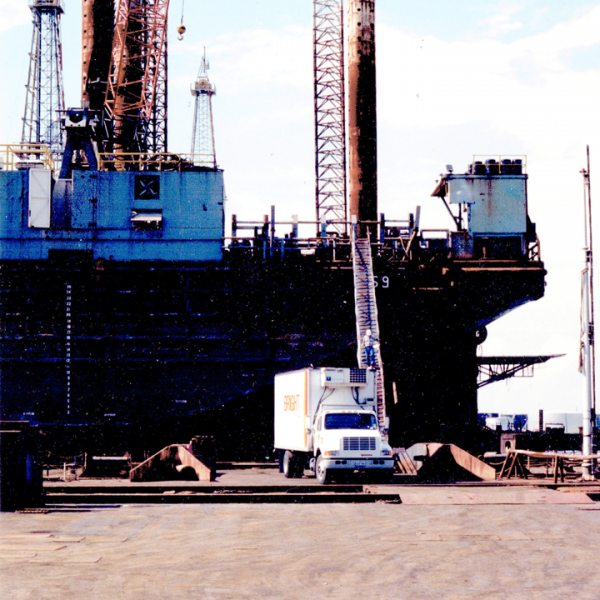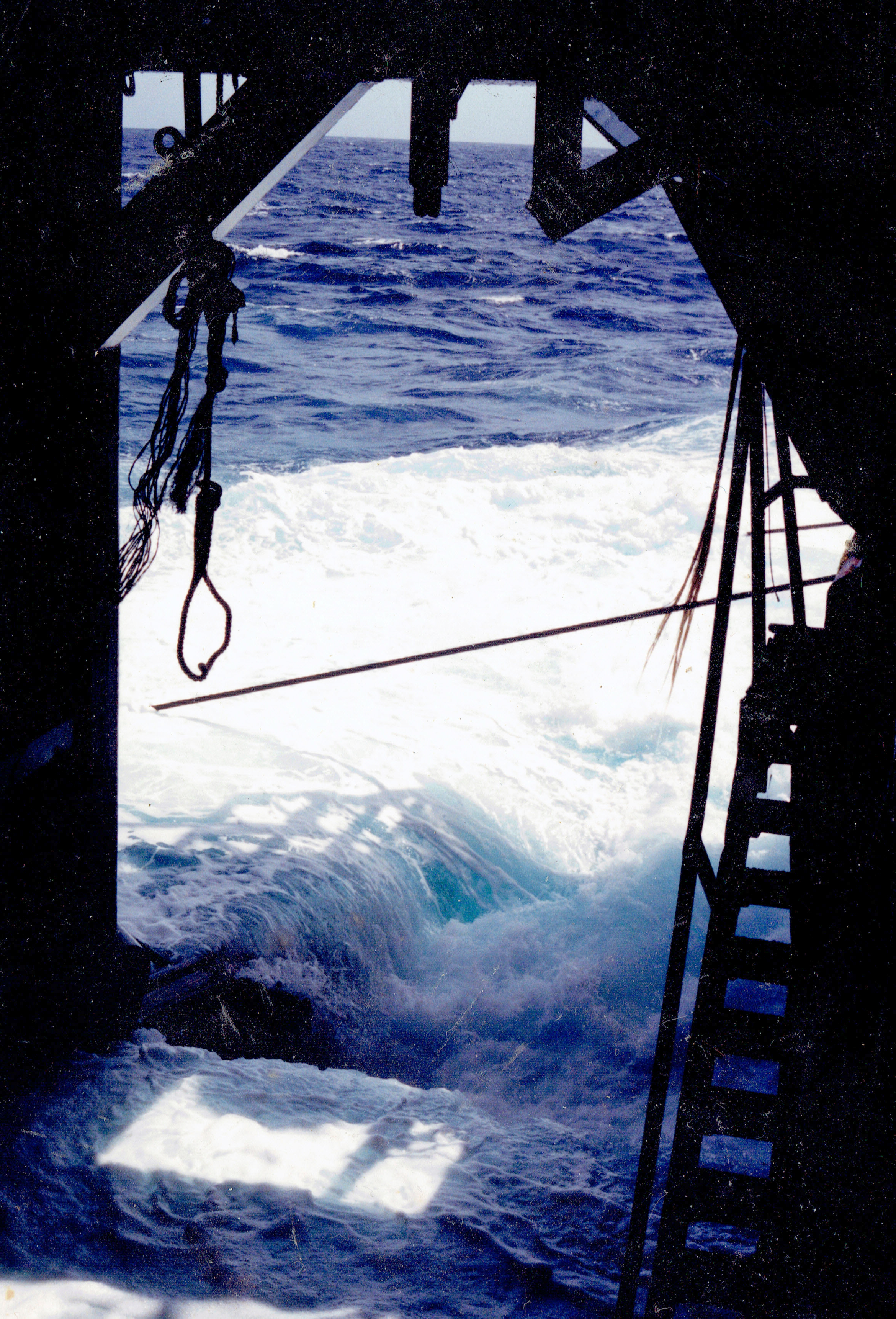Part 21 – All the Men In the Sea: The Untold Story of One of the Greatest Rescues in History

Barge Under Tow
In the supply room Gustavo’s shift had started at midnight and was due to end at noon, when El Padre would take over. Saturday night had begun slowly. With the barge under tow, few calls were made for equipment. Gustavo had his assistants checked the lashings on all the larger equipment and made sure the screen doors on the enclosures for small items were also secured. Sunday morning, however, was a different story. Men began rushing in for hoses and pump connections. As soon as they received what they came for, they went tearing back out, calling to Gustavo that it was an emergency and they didn’t have time to fill out paperwork. If he didn’t like it, he could talk to Señor Lobb.

Looking aft from the pipe alley. As the 269 began to sink the sea rose higher and higher at the stern of the ship. Courtesy Tim Noble
What was happening was all too clear to Gustavo and to everyone else on the barge, so it was no surprise when everyone was told to put their life jackets on and assemble on deck. Before Gustavo and his men could shut down and leave the storeroom, one of the barge foremen came in and ordered all of them to put out as many buckets and water containers as they could find. There was a considerable number, and as soon as they were stacked at the supply room entrance, a group of men came down and carried off as many as they could handle. When all the available buckets were put out, Gustavo and his assistants were ordered to follow the others aft.
Bucket Brigade
The pumps could no longer keep up with the water flowing into spaces near the stern on the machinery deck. Perhaps a bucket brigade would make enough difference to keep them afloat. Over a hundred men had been ordered to form two lines extending from the stern on the machinery deck going up the stairwell leading to the galley. The lines of men ended at the drain in the washing area. Furiously men passed two-thirds-full buckets up one line and empties back down the other. The water from the buckets, once emptied in the drain, was pumped over the side. The grand plan came to nothing. The bucket brigade didn’t seem to make any difference at all. The water level kept rising. After an hour and a half, the men were told to stop and to go topside.
Not-So-Watertight Doors
In the recreation room welders were trying to seal the hatch in the deck through which water was gushing from the filled compressor room below it. Evidently the water pressure in that space, sealed with watertight doors, was so great that it was forcing open cracks and seams in bulkheads and the ceiling. Even using an arc welder, the welders failed to seal the hatch. Superintendent Lobb then ordered mattresses and foam pads to be laid over the hatch cover in a desperate attempt to staunch the flow of water into the rec room. The watertight doors that were leaking could still slow the flooding’s advance on the machinery deck, but the living-quarters deck contained few watertight doors. Also, even if there had been watertight doors in every space, the heating/air-conditioning ducts would allow water to be carried to every compartment on the entire deck. More and more mattresses were stacked on the floor of the rec room and still the water gushed in. This proved to be another failure, and now there seemed to be few, if any, options remaining.
Sea Level Creep
By early afternoon another leak had developed on the starboard side, forward, perhaps in a ballast tank beneath the machinery deck. Water began flowing into the desalination room above it, and the 269 began listing further to starboard as water collected on that side.
As the morning had progressed, some of the men had stayed at their life-raft stations. Others had tried to find some shelter from the furious wind, which not only tore at them but blew spray and rain in blinding, stinging sheets, horizontally and continuously. The men began to suffer teeth-chattering cold, and in the tropics they were not prepared for it. The Mexican crew, many of whom wore only skimpy shirts and jeans, suffered the most. Most of the divers and some of the dive-support crew had put on wetsuit tops before coming on deck and so were relatively well protected. Even they, however, looked for sanctuaries more sheltered than the exposed heliodeck. Some of the dive crew retreated to a semiprotected walkway next to the superstructure of the big crane and below the heliodeck. From their new vantage point they had a good view of the end of the pipe alley where it dropped diagonally into the sea at the 269‘s stern. From the end of the alley the finished pipeline was lowered to the seabed on a long steel tail, called a stinger, which hinged on the transom and had been removed and lashed to the deck prior to Roxanne’s first arrival. Hour after hour the men watched the sea level creep up the diagonal pipe alley, mute testimony to the fact that their vessel was sinking.

